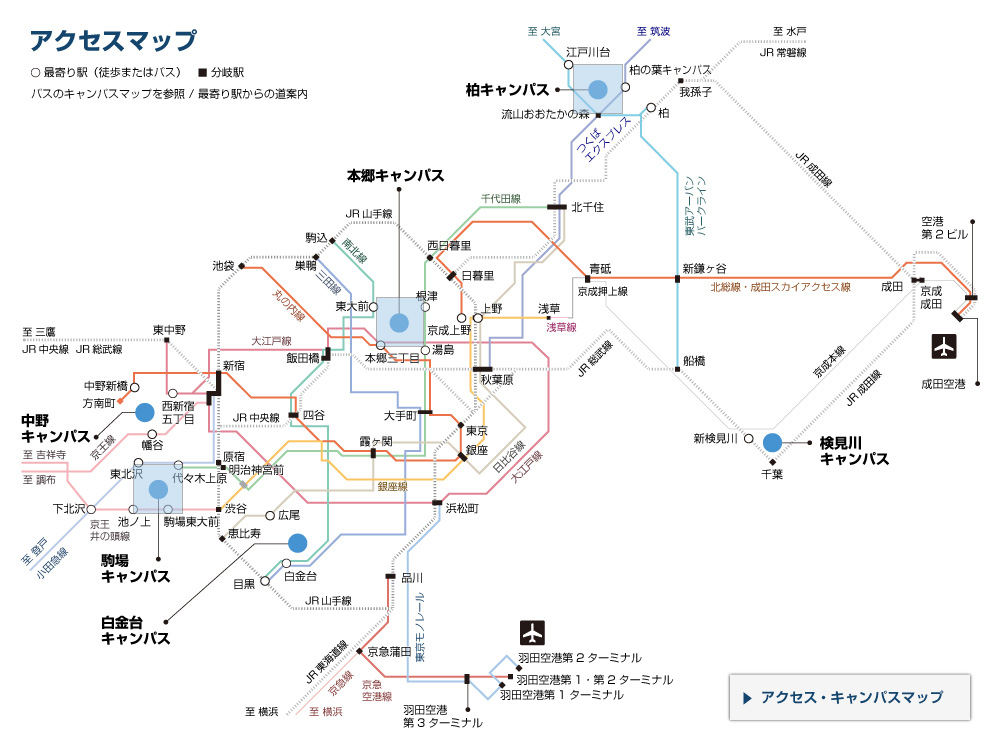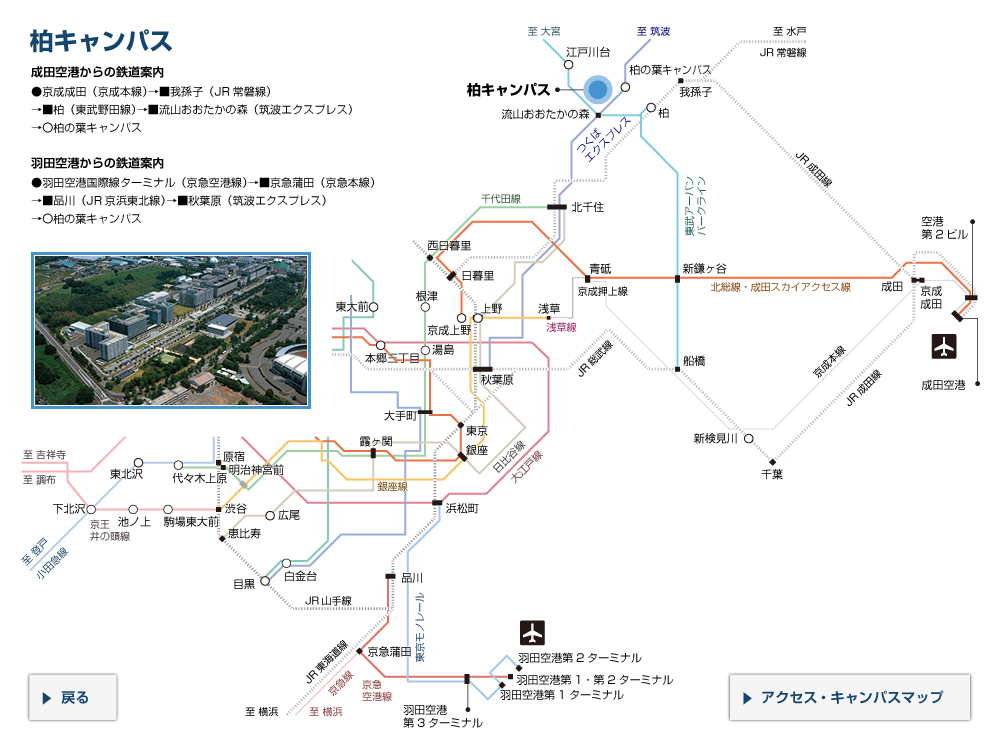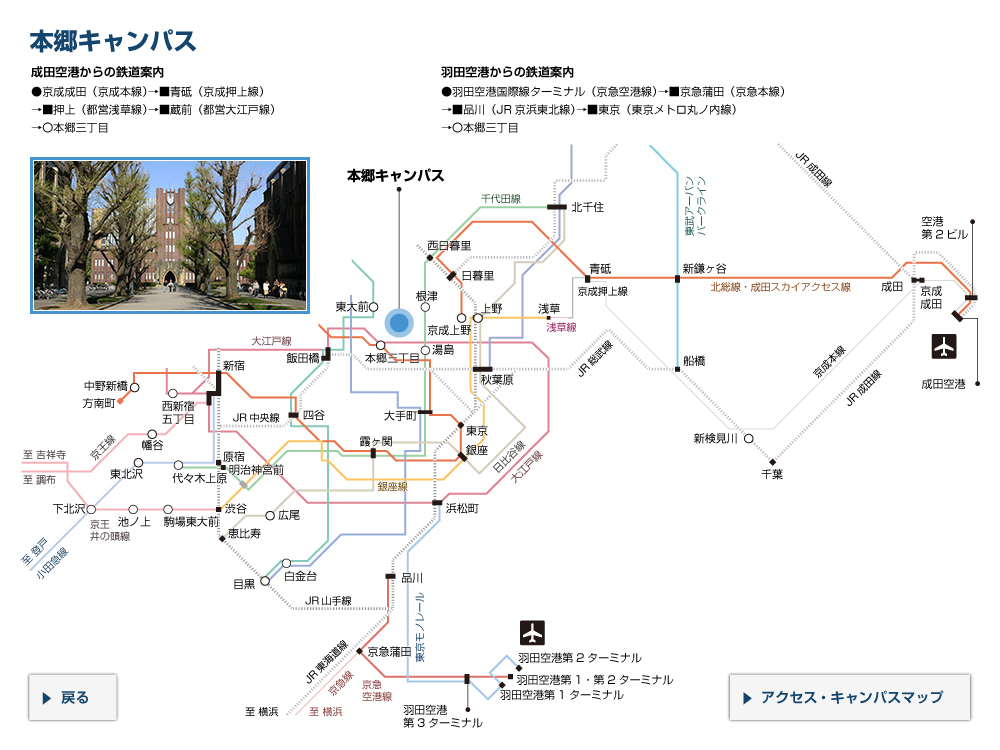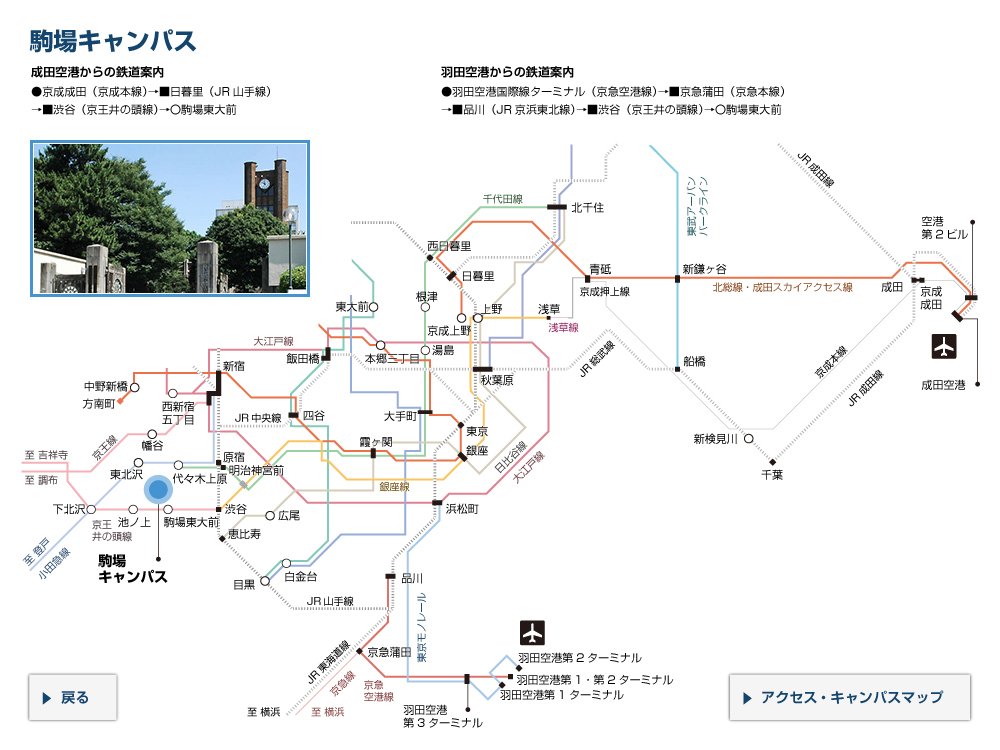平成30年度 秋季入学式 総長式辞


Address by the President of the University of Tokyo
at the 2018 Autumn Matriculation Ceremony
Welcome to the University of Tokyo. On behalf of the University’s faculty members, I would like to extend our sincere congratulations to all of you. I would also like to congratulate your families, who have supported you through your studies and are present here today to join in this celebration.
The total number of new students entering our Graduate Schools this autumn is 764. Of these, 426 are joining master’s programs, 279 are joining doctoral programs, and 59 are joining professional degree programs. At our undergraduate faculties, 32 students are enrolling in Programs in English at Komaba, or PEAK, an English-language degree program. Also, 6 students are entering the Global Science Course of the Faculty of Science, an English-language transfer program for those who started their study at foreign universities.
All of you must be eager to take on new challenges in research and study at the University of Tokyo. In terms of size, the range of academic disciplines, and the level of research activity, the University of Tokyo is one of the world’s leading universities. I would like you to make the best use of our outstanding academic environment to expand and realize your dreams. You will have full support from all our staff at the University.
April, last year, the University of Tokyo celebrated its 140th anniversary. These 140 years can be divided into two periods of roughly 70 years before and after the end of World War II in 1945.
The first half of those 140 years coincided with the modernization of Japan, which began with the opening of the country to the world. The second half started with the reconstruction of Japan after World War II. This was the time when Japan was committed to building a peaceful and democratic society. In both periods, the University dedicated itself to fostering the leaders of the next generation, while also leading efforts to create, develop and expand the boundaries of human knowledge.
Now, the University is entering its third 70 years. We call this “UTokyo 3.0.” In Japan and many parts of the world, people today enjoy prosperity they could not have imagined 70 years ago. But at the same time, we are seeing a number of issues affecting the entire world, such as global warming, growing disparity, and conflicts between different cultures. These issues are becoming ever more complicated. Our challenge is to overcome these global issues and create a hopeful and bright future over the next 70 years. Whether we can succeed depends on the will and effort of each and every one of you.
You will soon start your studies at the University. How will theses studies contribute to creating a brighter future for each of you? To approach this question, let me tell you about an important trend in recent academic research. Traditionally, each academic discipline – such as natural science, engineering, social science, and the humanities – has carried out research independently. But now each of these disciplines are merging activities across their boundaries, to better analyze and identify human behavior and our social and economic order. Moreover, insights gained from such research activity are increasingly applied to governments’ policy making.
Let me begin by sharing a story about a breakthrough in neuroscience. In the 1990s, researchers developed an imaging technology for brain function. This technology is called functional magnetic resonance imaging, or fMRI. By utilizing an electro-magnetic phenomenon called nuclear magnetic resonance, it can detect changes in blood flow and oxygen exchange caused by neural activity. It can visualize this activity in the form of images. Dr. Seiji Ogawa, currently professor at Tohoku Fukushi University, discovered the basic principle of this technology. He is a graduate of the Department of Applied Physics, in the Faculty of Engineering of our University. He conducted research for many years at the Bell Telephone Laboratories in the U.S. I also had an opportunity to stay at the Bell Laboratories for collaboration on optical physics during the time when Dr. Ogawa was developing the fMRI technology. I remember having met Dr. Ogawa on several occasions at the time. The use of fMRI helps visualize the process of various brain functions and the areas of the brain in which they occur.
This fMRI technology helped the rapid development of human neuroscience. The expertise gained from that has found many medical applications. It has also merged with other sciences and the humanities, leading to the development of new academic disciplines. The University established the International Research Center for Neurointelligence or IRCN in October 2017, with the aim of developing a new discipline. This center represents the integration of bioscience, medical science, and information science, among other fields. Through the study of neural networks, the IRCN seeks to understand the mechanism of mental illness caused by brain disorders. At the same time, it aims to develop revolutionary artificial intelligence technology by using the expertise gained by exploring the operating principles of cranial nerves.
You may wonder how visualizing brain activity has made a difference in research. I wonder if you have heard about the Marshmallow Test, which is an experiment long used in psychology. Let me explain. You show kindergarten children a marshmallow. You tell them that they can eat it now, but you also promise to give them two if they wait for 20 minutes instead of eating it now. You then observe how they choose to behave.
There were researchers who used fMRI to observe children’s brain activity during this test. The researchers discovered that different areas of children’s brains became activated depending on whether they chose to engage in immediate and impulsive behavior or self-restrained and rational behavior. For those children who chose to eat the marshmallow immediately, the basal ganglia, located in the center of their brains, the so-called hot system, was activated. For those who waited patiently to get two pieces later, the prefrontal cortex, located in the front side of their brains, or the cool system, was activated. Follow-up research has suggested that there is a positive correlation between the self-restraint children exhibited in the test and their academic performance and higher self-esteem later in their lives.
Moreover, later research has found that the training to activate the prefrontal cortex, where the cool system is located, can help children and adults alike to strengthen their self-restraint. The U.S. has introduced an experimental education program based on this research. The use of fMRI helps visualize stimulus as input and action as output. More importantly, it visualizes what is in between; the processes that underlay the reactions taking place in our brains, which are highly complex systems. This research is developing dynamically across disciplinary boundaries.
Economics analyzes the processes by which society, another complex system, reacts to stimuli. In recent years, a new area of economics, called behavioral economics, has been developing rapidly. Behavioral economics incorporates research methods from neuroscience and psychology and seeks to study human behavior in an empirical manner. Professor Daniel Kahneman and Professor Richard Thaler are pioneers in this field, and won the Nobel Prize in Economics in 2002 and 2017, respectively. Behavioral economics is now used in government policy making as well.
Models of human behavior in economics have long been based on the premise that individuals make rational decisions to maximize their own benefit. In particular, neo-classical economics, which began in the mid-nineteenth century, is based on the premise that individuals make rational choices. This branch of economics has analyzed how society behaves as a cluster of consumption and production based on this model of the rational individual. However, behavioral economics research has shown that we do not always act rationally. Sometimes we even act against our interests due to factors such as cognitive bias and weak willpower. There is need for policy to help people make rational decisions. For example, the U.S. and the U.K. have already taken steps to encourage workers to save more for investment by offering psychological as well as economic incentives.
Even so, while we have begun to visualize the actions of individuals’ brains using fMRI, we have not yet fully visualized the complicated system of our society. From the 19th century through the 20th century, the social sciences developed not just economic statistics but also gathered social statistics such as birth rates. As such, opinion poll methods have developed along the way. But it is an ongoing challenge for researchers to decode a growing volume of new big data in this information-driven 21st century and clarify dynamic processes taking place in our society.
As I said earlier, scientific expertise of different disciplines is merging across boundaries and is contributing to policy making. However, who will make these policies is another problem. To ensure that policies will bring us a hopeful future, we need to return to basic principles, which is an important capability of knowledge professionals.
Behavioral economist Professor Daniel Kahneman said in his book “Thinking, Fast and Slow,” that “insulating the experts from the emotions of the public produces policies that the public will reject.” I think his argument is easy to understand for us who live in a democracy and are accustomed to political participation through the electoral process.
On the other hand, we have learned from behavioral economics that most people are not so good at assessing risks objectively. It is said that they tend to either ignore risks entirely or over-emphasize them. Some research points out that this very behavior hinders the design of a legal system for risk response and equitable distribution of public funds.
If people tend to make decisions that are biased or not rational, this tendency can also be true of their voting decisions. Politicians who are “tested and elected” could also make decisions based on their biases. If that is the case, perhaps we should question the common idea that important policy decisions should be left to those “tested and elected” public figures.
Such a discussion deals with a rather difficult question concerning the very foundations of legal studies and political science; to what extent should policy decisions be made democratically? I am a physicist, so I am afraid I can’t answer such a profound question here. But since we live in an age when the outcomes of scientific research can be applied to policy making, I would like to stress that scientists cannot remain indifferent to the process by which policies are made.
I have so far talked about brain science, behavioral economics, and political science. What I wanted to convey to you is this: different academic disciplines are not independent of each other. They are related and develop by influencing one another. This trend will become even stronger in the years to come. At the same time, you will face a number of new challenges that you must engage with to make our world a better place.
The University of Tokyo produces high level research in a wide range of academic disciplines. It is an ideal environment for cultivating new academic disciplines by integrating different fields. You will go on to become leaders in your chosen fields. I hope you will not just stay in your specialty, but reach across boundaries to interact with researchers of other disciplines and expand the horizons of your knowledge. From my own experience, this will give you a new perspective on what you are working on now, which in turn will help deepen your understanding or find an unexpected hint that will lead to even greater progress.Incorporating interdisciplinary insights to the existing body of research is challenging and difficult. But I hope you will cultivate your own new field of study with courage and strong will. You will be surrounded by friends and colleagues who are also tackling their own academic challenges. The University of Tokyo is ready to support your endeavor in every possible way. United by our dreams, facing up to our challenges with determination, we can create new value and new traditions together. I look forward to seeing your great achievements at the University of Tokyo.
Makoto Gonokami
President
The University of Tokyo
September 21, 2018
(和文)平成30年度 東京大学秋季入学式 総長式辞
本日東京大学に入学された皆さんに、東京大学の教職員を代表して、心よりお祝い申し上げます。また、これまで皆さんを物心ともに支え、この晴れの日をともにお迎えになったご家族の皆さまにも、心より祝意をお伝えいたします。
この秋、大学院には、修士課程426名、博士課程279名、専門職学位課程59名、合計764名が入学しました。学部へは、初等中等教育を日本語以外で履修した学生を対象とするPEAK(Program in English at Komaba)に32名が入学しました。また、グローバルサイエンスコース(GSC)に6名が入学しました。
皆さんは、これから始まる、本学での研究と学びへの期待に胸をふくまらせていることでしょう。東京大学は、規模、学問分野の幅、研究水準のいずれにおいても、世界トップクラスの大学です。この恵まれた環境の中で大きな夢をはぐくみ、それを叶えてください。私たちは、全力で皆さんをサポートしたいと思っています。
東京大学は、昨年4月に創立140周年を迎えました。この140年という期間は、1945年の終戦を境におおむね70年ずつに区切ることができます。
前半の70年間は、日本が世界に門戸を開き、近代化に向かって邁進した時代です。後半の70年間は、敗戦からの復興に始まり、日本が平和で豊かな、そして民主的な社会の実現に力を注いだ時代に当たります。いずれの期間においても、東京大学は、学問の創造・発展をリードするとともに、次代を担う人材の養成に努めてきました。
そして今、東京大学は、私たちが「UTokyo 3.0」と名付ける第三の時代を迎えています。今日、日本を含む世界の多くの地域で、人々は70年前とは比較にならないほどの豊かさを享受しています。しかしその一方で、地球温暖化、格差の拡大、異文化間の摩擦など地球全体に影響を及ぼす課題が顕在化し、いっそう深刻になってきています。次の70年間に私達が、こうした人類社会全体の課題を乗り越え、世界を希望に満ちた輝くものとできるか否か、それはひとえに、次代を担う皆さん一人一人の意思と努力にかかっています。
皆さんがこれから取り組む学問は、皆さんの未来を希望に満ちたものとするために、どんな貢献をすることができるでしょうか。この問いを考えるための手掛かりとして、ここでは、最近の学術研究に見られる注目すべき傾向についてお話ししましょう。それは、従来、たがいに独立して研究されてきた自然科学、工学、社会科学および人文学などの諸分野が、それぞれの領域を越えて融合することによって、人間行動や社会経済秩序をよりよく分析・解明する研究が進展しているということです。さらに、そこで得られた知見を、行政の政策立案に活用するという動きも進んでいます。
まず、脳科学研究における一つのブレークスルーから話を始めましょうⅰ。1990年代に、脳の機能に関わる活動を画像化する技術が生まれました。これは機能的磁気共鳴画像法(functional magnetic resonance imaging; fMRI)と呼ばれる技術で、脳の神経活動に伴う血流量の変化や酸素のやりとりを核磁気共鳴という電磁現象を通じて捉え、画像で見えるようにするものです。fMRI の基本原理の発見者である小川誠二博士(現・東北福祉大学特任教授)は、本学工学部応用物理学科の卒業生で、長年米国のベル研究所で研究されました。私もちょうどこの技術が発明された頃、ベル研究所で光物理学の研究をする機会があり、小川博士にも何度かお会いしたことを思い出します。fMRIによって、脳の様々な機能活動がそれぞれどの部位で起こっているか、そのプロセスを視覚的に捉えることが可能となりました。
このfMRI が牽引力となって、ヒトを研究対象とした脳神経科学は一気に発展します。その知見は、医療現場で活用されるだけでなく、科学や人文学の諸領域とも融合し、新たな学問領域の開拓につながっていきました。東京大学が2017年10月に立ち上げた、ニューロインテリジェンス国際研究機構(International Research Center for Neuro-intelligence; IRCN)ⅱもまさに、この新しい学問領域の開拓を目指し、生命科学や医学と情報科学等を融合したものです。IRCN は、脳神経回路の研究を通じ、その障害が引き起こす精神疾患の病態を解明するとともに、脳神経の動作原理の探求で得た知見をもとに、これまでにない革新的な人工知能(AI)を開発することも目指しています。
さて、脳の実際の活動が、画面上で見えるようになったことで、研究がどのように変わっていったのでしょうか。皆さんは、心理学で昔から行われている、マシュマロ・テストという実験研究を聞いたことがあるでしょうかⅲ。それは次のようなテストです。幼稚園児にお菓子を1個見せます。そこで園児に、すぐに食べてもいいけれど、20分待てばお菓子を2個あげると約束します。そして子どもたちが選択する行動を観察するのです。
このテストで、fMRIを使って子どもたちの脳の状態を観測した研究者がいます。すぐにお菓子を食べてしまうという即時的・衝動的な行動をする場合と、我慢して後でお菓子を2個もらうという自制的・理性的な行動をする場合とで、脳の活性化する部位が異なることがわかったのです。前者では、ホットシステムと呼ばれる大脳基底核が、後者では、クールシステムと呼ばれる前頭前皮質が活性化していました。テストで示された自制心の高さと、成長してからの学業成績や自尊心の高さ等との間にポジティブな相関関係があることも、追跡調査により明らかにされました。
さらに、その後の研究では、クールシステムを担う前頭前皮質を活性化させるトレーニングを行うと、子どもだけでなく大人になってからでも、自制心を高めることが可能であることがわかりました。米国ではこれらの研究成果にもとづいた、実験的な教育プログラムが導入されています。インプットの刺激と、アウトプットの行動だけでなく、その中間にある脳という複雑なシステムの反応のプロセスが見えるようになることで、研究は分野を超えてダイナミックに展開していったのです。
社会という複雑なシステムの反応のプロセスを分析する経済学でも、近年では、脳科学や心理学の研究方法をとりいれ、より実証的に人間行動そのものの解明を目指す行動経済学と呼ばれる分野が急速に発展しています。この分野の先駆者であるダニエル・カーネマン教授とリチャード・セイラー教授は、それぞれ、2002年と2017年にノーベル経済学賞を受賞しました。行動経済学は、政策の立案にも活用されつつあります。
これまでの経済学では、人間がどのように行動するかということについて、個人は自己の効用の期待値を最大にするために合理的に意思決定するという人間行動のモデルを前提としてきました。特に、19世紀中葉以降に発展した新古典派経済学(neo-classical economics)は、合理的な選択をする個人というモデルのもとで、消費や生産の集積として社会全体がどのように動いていくかを分析してきました。しかし、行動経済学の研究によると、私たち人間はいつも合理的に行動するわけではなく、認知バイアスや意思の弱さなどといった要因により、自分自身の利益に反する行動をとることもままあるということが明らかになっています。そこで、人々が合理的な意思決定をすることを助けるための政策が必要となり、実際に米国や英国では、例えば、勤労者の貯蓄投資を支援するための施策が既に実行されていますⅳ。
しかしながら、fMRIが個人の脳の活動を可視化したようには、まだ私たちは社会という複雑なシステムの機能を十分に可視化してはとらえていません。社会科学は19世紀から20世紀にかけて、経済統計だけでなく出生率などの社会統計を整備し、世論調査の手法を発展させてきましたが、21世紀の情報化のなかで新たに生成しつつあるビッグデータを解読し、社会のダイナミックなプロセスをみえるようにするのは、まだまだこれからの学術の課題なのです。
さきほど、領域を超えて融合しつつある科学の知見が政策の立案にも貢献しているといいました。しかし、誰が政策立案を行うべきかは、考えなければならないもう一つの問題です。そして、その政策が私たちの未来を希望に満ちたものとするかどうかについては、もういちど原理にもどって考えていく「知のプロフェッショナル」としての姿勢が必要になります。
行動経済学のカーネマン教授は、「選挙での洗礼を受けていない専門家に重大な決定を任せれば、結局は、市民から拒否されるような政策を立てるだけであるかもしれない」と指摘していますⅴ。この主張は、民主主義的な社会に生き、投票による政治参加に親しんでいる者には、理解しやすい考えといえます。
その一方で、行動経済学によって得られた知見の一つとして、一般の人々はリスクの客観的評価が苦手であり、リスクを全く無視するかむやみに重大視するかの両極端になりがちである、といわれていますⅵ。このことが、リスクに対処するための法制度の設計や、公共予算の配分を歪めていると指摘する研究もありますⅶ。
もしも一般の人々の判断が必ずしも合理的でなく、バイアスのかかった判断をしがちであるとすれば、それは選挙の際の判断についても同じことが言えるでしょう。「選挙の洗礼」を受けた政治家の判断もまた、同様にバイアスがかかるかもしれません。もしそうだとすれば、我々が普段慣れ親しんでいる、政策上の重大な決定は、「選挙の洗礼」を受けた者に任せるべきであるという考え方も、自明とは言い切れないのではないでしょうか。
こうした議論は、政策決定はどこまで民主主義的に行われるべきかという、法学や政治学の根本に関わる難問です。この場で、物理学者である私が、そのような難問に答えを出すことは出来ません。ここではただ、科学の研究成果が政策に生かされる可能性がある時代において、科学者もまた政策決定がどう行われるべきかという問題と無縁ではいられないのだ、と言うことを強調しておきたいと思います。
脳科学や行動経済学や政治学の話を通じてみなさんに伝えたかったことは、学問の諸分野はそれぞれ孤立しているのではなく、むしろ互いに関わり、影響を及ぼし合うことによって発展していくものである、ということです。皆さんが活躍するこれからの時代には、この傾向は、いっそう強くなるでしょう。そして、世の中をよりよくするために、取り組まなければならない新しい課題も次々に生まれてきます。
幅広い学問分野で高い研究水準を誇る東京大学は、諸分野を融合して新たな学問分野を切り開くには最適な環境にあります。次代を担う皆さんには、自らの研究課題の探求に閉じこもるのでなく、進んで他分野の研究者とも交流して自己の知見を拡げてほしいと思います。それは、自分が今取り組んでいる課題に新たな視点を与えるきっかけを与え、それを深めることや思いもよらない大きな発展のきっかけをつかむことに結びつくでしょう。これは私自身の経験に基づく実感です。
分野を超えた知見を既存の研究の蓄積の上に取り込むことは、チャレンジングで困難も多いはずです。しかし、皆さんには是非、諦めずに自らの分野を開拓してほしいと思います。皆さんの周りには同じように挑戦を続ける仲間や先輩がいます。東京大学はあらゆる面で皆さんの挑戦を支えていきます。共に夢を抱きながら粘り強く課題に立ち向かい、新たな価値や伝統をともに創り出していきましょう。皆さんが東京大学で、元気に活躍されることを期待しています。
平成30年9月21日
東京大学総長 五神 真
- ⅰ 東北福祉大学(https://www.tfu.ac.jp/research/gp2014_01/explanation.html)
- ⅱ IRCNウェブサイト(https://ircn.jp/)
- ⅲ ウォルター・ミシェル(柴田裕訳)『マシュマロ・テスト : 成功する子・しない子,』(早川書房、2015)
- ⅳ リチャード・セイラー(遠藤真美訳)『行動経済学の逆襲』(早川書房、2016)31章.
- ⅴ ダニエル・カーネマン(村井章子=友野典男訳)『ファスト&スロー:あなたの意思はどのように決まるか?』(早川書房、2012)第13章。
- ⅵ カーネマン 第13章。
- ⅶ Timur Kuran and Cass R. Sunstein, “Availability Cascades and Risk Regulation,” Stanford Law Review 51(1999): 683-768.
- カテゴリナビ






